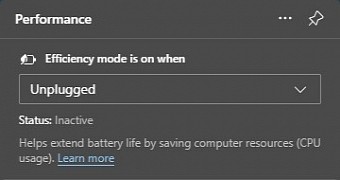Microsoft Edge is a browser whose market share keeps improving, and it’s not only because it’s offered as the default app on Windows 11.
Edge is actually a fully featured browser, and Microsoft keeps improving it with new functionality on a regular basis, adding new capabilities that make it faster, more stable, and more power efficient regardless of platform.
One of the biggest additions to the Edge feature arsenal is support for Sleeping Tabs, a tool whose main role is to simply put inactive tabs to sleep. This means they no longer use resources in the background, with the browser therefore reducing the battery consumption when Microsoft Edge is running.
Microsoft has recently revealed on Twitter that Microsoft Edge managed to put to sleep no more, no less than 6 billion tabs in just one month.
“Use sleeping tabs to save resources? You aren’t alone! Over the past 28 days on Windows devices, we slept 6 billion tabs resulting in a savings of 273.7 Petabytes of RAM. That’s roughly 39.1 megabytes saved per tab,” the company announced.
Sleeping tabs have been around for a while, but a very important update was announced in April this year when Microsoft added an improved behavior to improve resource saving.
“Beginning in Microsoft Edge 100, we’ve updated sleeping tabs to enable pages that are sharing a browsing instance with another page to now go to sleep. With this change, 8% more tabs on average will sleep, saving you even more resources! On average, each sleeping tab saves 85% of memory and 99% CPU for Microsoft Edge. We’ve also added a way for you to view how much memory sleeping tabs is saving you by visiting Performance under the “…” (“Settings and more”) menu,” Microsoft announced at that point.
Sleeping tabs are available in Microsoft Edge on all desktop platforms where the browser can be installed.

 14 DAY TRIAL //
14 DAY TRIAL //